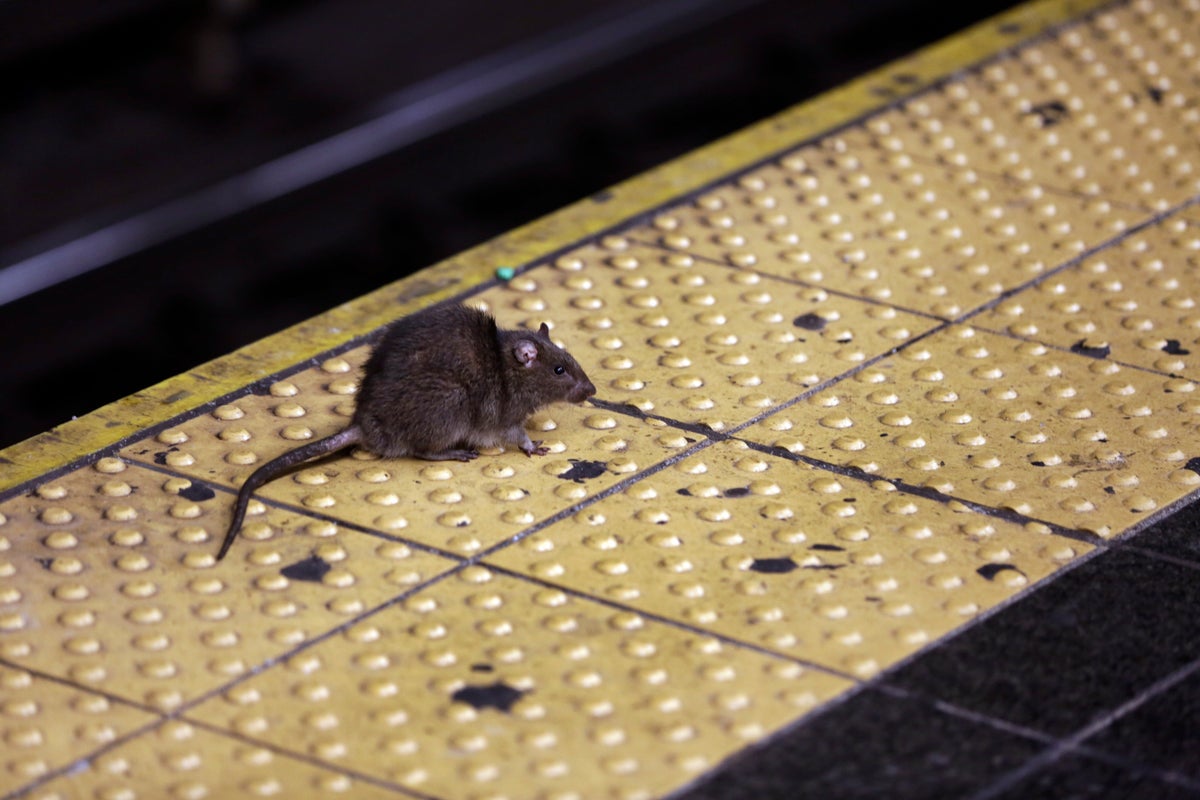
Legend has it that alligators roam the underbelly of New York City in the sewers – but everyone knows that the real rulers of the city are the rats that have conquered the subway stations.
But how many of these pesky rodents actually scurry around the subway lines?
Well, the popular transport app Transit has now launched a new feature answering that very question.
Transit’s NYC Subway Rat Detector allows New Yorkers to log every time they spot a rat in the subway system.
While waiting for the subway to pull in, the app asks commuters how many rats they feel they are in the presence of.
They can answer “So Many,” “One or Two”, or “None,” which then feeds this data to other app users, so they can arrive at the station knowing if they will come across a rodent or two.
Around 17,000 reports have been submitted to the app, with the data being compiled into a “Ratistical Analysis” of the last 30 days.
The data shows New Yorkers reported spotting rats on 40 per cent of subway trips in the past month while each station has been ranked in terms of how ratty it is.
Transit also asks commuters if they feel that rats run the city. According to the latest app report, 29 per cent of people believe that they do.
Here are the current rattiest stations on the NYC Subway:
- 191 Street
- Grand Avenue
- 137 St-City College
- Great Kills
- Bowery
- Kingston-Throop Avenues
- 149 Street - Grand Concourse
- 181 Street
- Kingsbridge Road
- Woodhaven Boulevard
While Transit’s usual features show train and bus times, the communal rat alerts have become a wild success for city-dwellers.
“It just totally blew up,” Joe MacNeil, Transit’s lead copywriter, told The New York Post.
“New Yorkers take perverse pride [in it and] find it amusing,” he said.
If the successful feature sticks around, more data across the year will be able to give commuters peak seasons for rat spotting, as well as highlight which stations may need to tackle their rodent problem.
The Metropolitan Transportation Authority, responsible for New York City’s transportation, did not reflect on Transit’s new findings.
Rats were spotted on 40 per cent of subway trips in October— (Gary Hershorn/Getty Images)
“Given we have no idea of the methodology surrounding your rat census, we decline to comment,” MTA spokesperson Kayla Shults said in a statement to The New York Post.
Back in April, New York City Mayor Eric Adams hired Kathleen Corradi as the city’s first “rat czar” to try and get a hold of New York’s centuries-old rat issue.
Ms Corradi is leading the city’s rat masters into battle with the pesky animals, from the Department of Health’s biologists, to pest controllers, to official urban rodentologists.
“You’ll be seeing a lot of me and lot less rats,” Ms Corradi declared in her inauguration speech.
New York City officials suggest that citizens should use rat-resistant containers to store their litter and repair cracks or holes in their buildings to stop their migration around the city.
Surprisingly, New York City is not the US’ top city for rat populations, according to pest control company Orkin.
Instead, its data found that Chicago is actually the rattiest city and has been since 2015.
Only time will tell if the rats will be defeated in the war between rodents and humans – or whether ratspotting will become so popular it will take off as a local pastime.







